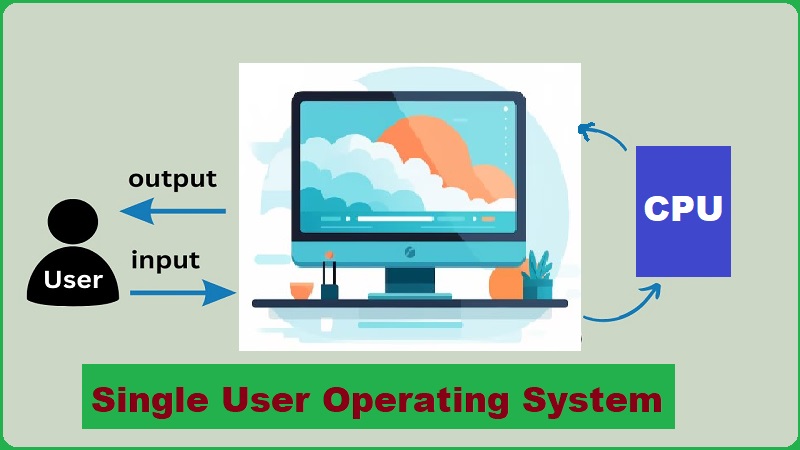What is Single User Operating System?
Definition: Single user operating system is also known as “Single Tasking Operating System”, and single user operating system is designed specially for using on the home computers.
Single user operating system allows the permission for accessing your personal computer at a time by single user, but some time it can support multiple profile. Single user operating system is using in the officially work and other environment as well.

So, this operating system doesn’t require for supporting the memory protection, file protection, and system security as well.
Types of Single-User Operating System
Single user operating system can be classified into two parts like as:
- Single-User Single-Tasking operating system
- Single-User Multi-Tasking operating system
Single-User Single-Tasking OS
In the Single-User Single-Tasking operating system, only one user in permitted for performing single task at a time. This operating system designed specially for wireless phone as well as two way messaging devices such as print a document, downloading images and video that performed one given frame time.
Examples O/S are – MS-DOS, Palm OS, etc.
Advantages are:
- Use less area in memory.
- It is Cost Effective.
Disadvantages are:
- It is able to execute only one task at a time duration.
- It is less optimized.
Single-User Multi-Tasking OS
Single-User Multi-Tasking operating system developed specially for one user, but this single user is able to perform to multiple tasks run at a same time frame. Some examples such as you can write any text, while surfing internet and downloading images with watching movies, etc.
Example O/S are – Windows, Linux, Mac O/S
Advantages:
- Time saving.
- High productivity in less time frame.
- Less memory is enough for performing multiple tasks.
Disadvantages:
- Require more space.
- It has more complexity.
Features of Single User Operating System
- It has no security.
- It does not use MMU.
- It does not use scheduling process for I/O.
- It uses less scheduling for the users.
- Just dedicated to single use.
- Not intended for several tasks as same given time.
Advantages of Single User Operating System
There are various benefits of single user operating system such as:
- Single operating system permits such interface, in which only one user work at a time, and other user can not create interruption in the processing. So this operating system does not need to bear the overloading the multiple users’ requests.
- Multiple resources are not using in the single operating system, so they have less complexity. Due to that reasons, this O/S needs only simple maintenance and debug as well.
- Due to less overload of sending requests by user, to hardware and software at once. So they have no more probability to damage them.
- Due to single user interface, this operating system allows only task execute at a given time. So user focuses only one task instead of multiple tasks.
Disadvantages of Single User Operating System
There are some limitation of single user operating system. Describe each one below
- Single user operating system is not capable to run multiple tasks at same frame time, so CPU waits to execution, until one task complete.
- This system is not able to optimize of CPU, memory and disk I/O at the optimal level, due to high CPU’s waiting pool request.
- It is slow nature.
- It has high response time.
- It uses high idle time.
Examples of Single User Operating System
Here, we will spread the light on list of single user operating system, and their applications as well.
- Windows 1.0
- Windows 2.0
- Windows 3.0
- Windows 3.1x
- Windows 95
- Windows 97
- Windows 98
- Windows ME
- MS – DOS
- Symbian OS



